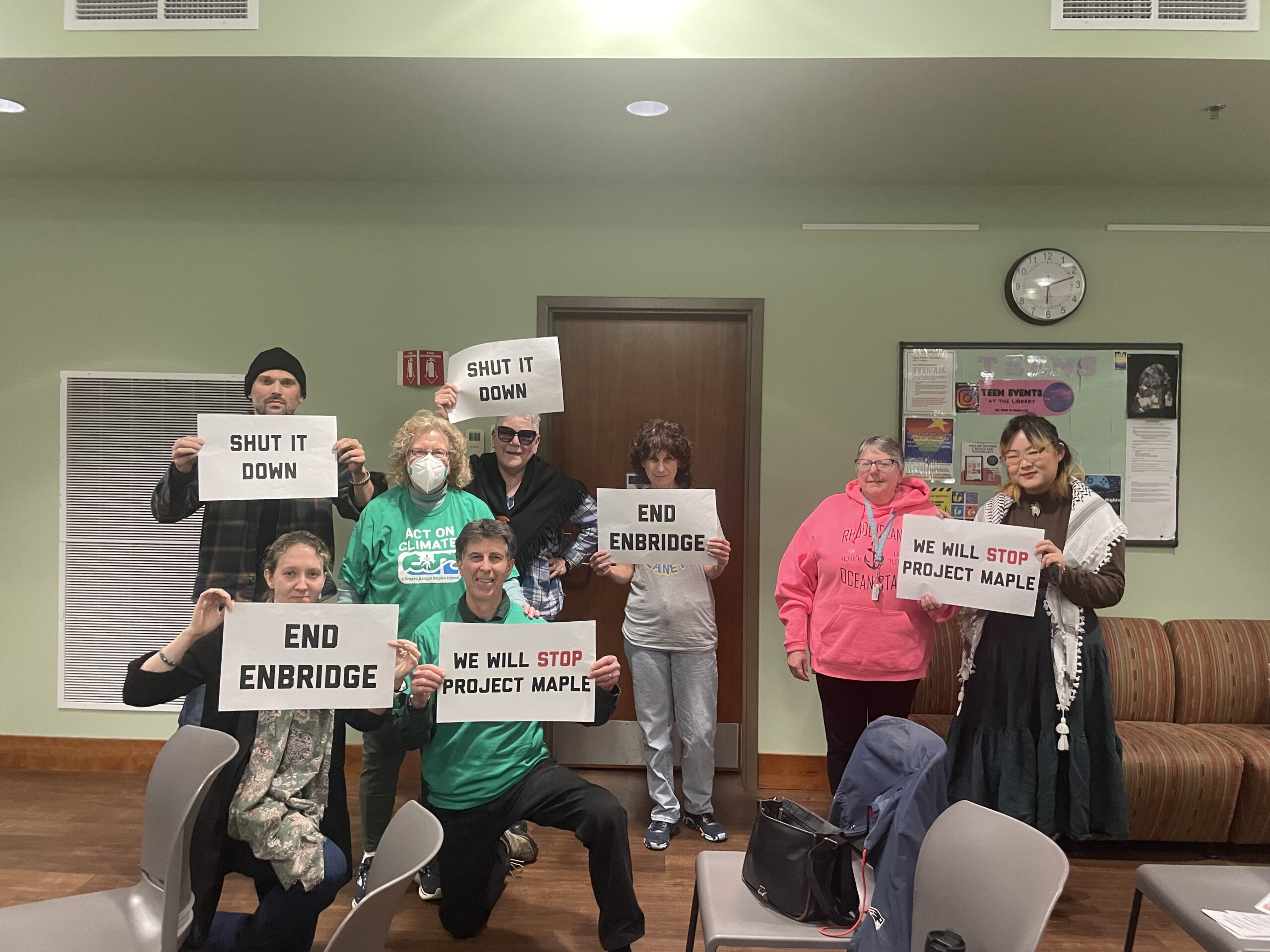New Report Finds Rhode Island has Plenty of Room to Expand Solar Responsibly
August 24, 2020
Rhode Island may be small, but according to a new report, it has room to generate lots of solar energy without sacrificing the state’s dwindling green spaces.
A recent report by Cambridge, Mass.-based Synapse Energy Economics Inc. concludes that Rhode Island can produce a greater amount of electricity than it consumes by installing solar arrays on more roofs, landfills, brownfields, gravel pits, and parking lots.
Open space advocates say the analysis, Solar Siting Opportunities for Rhode Island, proves that woodlands, meadows, and farmland don’t need to be cleared and covered to meet state renewable-energy objectives. As such, the 83-page report excludes farmland, residential open spaces, and state and municipal land from Rhode Island’s inventory of solar potential.
“The results are very encouraging and document it is possible to accommodate solar on developed and disturbed sites,” said Scott Millar, community manager for the sustainable development advocacy group Grow Smart Rhode Island.
Millar hopes the findings lead to more incentives to install solar arrays on built environments.
“That should take the development pressure off our forestland, which is critical to maintain for Rhode island to achieve our climate-change goals,” Millar said.
According to the report, which was commissioned by state officials, Rhode Island currently generates up to 198 megawatts of electricity from 7,723 solar installations. Of those, some 7,500 solar systems are mounted on residential structures across the state, producing 51 megawatts of power.
Ground-mounted solar arrays, however, deliver the most power, producing 74 megawatts of electricity from 163 facilities. Most of the report’s data is through November 2019, so newer systems aren’t included.
State renewable-energy incentives make it easier and more profitable to build on large wooded parcels. In rural communities, this wave of development is overwhelming planning departments and triggering community outcry.
The Synapse report finds that the state has ample room on built environments to expand its solar-energy generation. Already-developed sites across the state can host between 3,390 megawatts and 7,340 megawatts of renewable power, or about 13-30 times the amount currently installed in the state. This translates into 5,560 gigawatt-hours to 12,600 gigawatt-hours of potential electricity production. Rhode Island’s annual wholesale electric load is 7,826 gigawatt-hours of electricity.
The bulk of this untapped energy, up to 4,600 megawatts, can be reaped from ground-mounted solar arrays on parcels zoned as commercial and industrial, according to the report.
Parking lot carports have the next greatest solar-energy potential, with up to 1,060 megawatts of capacity.
Rooftops, both commercial and residential, have the potential to produce about 850 megawatts of solar power. Each city and town in Rhode Island can generate at least 3 megawatts of power from building rooftops. The average solar-energy potential from rooftops in the state’s 39 municipalities is 22 megawatts, according to the report.
Rhode Island has 19 capped landfills that have the aggregate potential to generate 260 megawatts of electricity.
Twelve gravel pits have the cumulative energy potential of 90 megawatts of solar power.
Rhode Island has 250 brownfields that are suitable for ground-mounted solar arrays and can be matched to an actual address. These brownfields can deliver up to 650 megawatts of solar energy. Providence has the most brownfields, and Charlestown has the most brownfield energy potential, at 170 megawatts.
Synapse acknowledged that the analysis is a satellite image rather than a roadmap, as “all numbers provided in this report are intended to be high-level, first-pass estimates.”
The study doesn’t consider solar-siting ordinances for each municipality. But it does include technical elements for each site, such as setbacks, shading, and potential costs. An affordability assessment measures the median income for each city and town but those numbers are rough calculations in cities like Providence where incomes vary greatly.
The report omits the drawbacks and opportunities for frontline and environmental-justice communities. The Rhode Island Office of Energy Resources (OER), which paid $83,000 for the report, said equity and environmental justice are getting added scrutiny with the recent hiring of an energy-justice program manager. It also noted that the expansion of community solar incentives is beginning to offer solar-power ownership to lower-income residents.
A goal of the study is to help cities and towns craft rules that make considerations for open space-friendly energy projects. To get there, municipalities are encouraged to pass zoning rules that accommodate solar building on these preferred sites.
Chris Kearns, OER’s interdepartmental project manager, said the report aims to maximize the number of potential locations for solar so that when municipalities adopt either first-time rules or make amendments to existing ones “they avoid one-size-fits-all ordinances as it relates to setbacks or lot coverage.”
Financial incentives for preferred sites are on the books in Massachusetts, New York, and Vermont. So far, two state renewable-energy programs, the Renewable Energy Fund and the Renewable Energy Growth Program, offer incentives for solar carport installations. Efforts in the General Assembly to assist municipalities in writing responsible solar-siting regulations have stalled. The latest bill, H7426, had its March 5 hearing postponed.
Mitigating global warming by reducing fossil-fuel consumption is one of the primary reasons for renewable energy. The recent report finds that a solar buildout in Rhode Island could prevent the release of up to 7.65 million metric tons of greenhouses gas annually, or about 70 percent of Rhode Island’s annual climate emissions.
Hank Webster, Rhode Island director for the Acadia Center, said policymakers should enhance incentives to help property owners invest in solar and battery technology to reduce demands on the grid, improve resiliency, and support renewable energy jobs.
“Renewable-energy investments, like rooftop solar, present a tremendous opportunity for consumers and communities to take more control over their energy costs,” Webster said. “With the gaining popularity of electric vehicles and electric heat pumps, installing a solar and battery system could enable customers to get all of their energy needs from the sun instead of polluting fossil fuels we import from other states.”




Solar panels over parking lots in a win win! Norwood, MA has these slalr carports at the T station and it’s great! First and foremost, these solar carports prevents deforestation, keeps the heat from radiating off the pavement, prevents sun/heat damage and snow fall off parked cars for commuters, and provides free energy. I’d like to see these all over RI, including a mandate that all big box stores must have them both on the roof and over the parking lots.
RI law on home solar needs to be updated. As it is, homeowners are only allowed to install enough solar capacity to power their house, determined by an average of the last 3 years’ usage. If someone wants to install more solar, anticipating using more power later or wishing to make clean energy to help the planet, they cannot as the law now stands. Most other states encourage homes to install as much solar as they wish, selling the excess at a reduced rate back to the grid.
I believe solar energy is a good source of energy, however solar energy totally disrupts the rural nature of our community. On roof tops of businesses and parking lots great, taking up space in our woodlands and pasture areas “not so good”!! Totally against it as well as totally against those ugly wind turbines!! For me keep them out of Charlestown please!!!
This will remain a good idea in theory only unless the state, cities and towns provide the incentives and partner to create large enough projects to make these types of mounts feasible for city and town owned structures, or "worth it" from a cost perspective to the owners of large buildings. I wondered why this wasn’t happening years ago and learned that it won’t happen just because we wish it to. Solar panels and mounting costs significant money that needs to come from somewhere, either public or private. It is a great investment in our future but we need to make sure it is more than a pipe dream before we kill other green energy projects – which is the intention of this report. Let’s see the incentive structure and the will from state and city leaders to really get this done as advertised. So far I have not seen it.
Julie,
You are correct that developers/businesses lack the incentive to create these projects. However, it is worth killing other "green" projects that involve deforestation in RI and elsewhere. There is nothing green about bulldozing hundreds of acres of forest habitat to erect solar installations – enough is enough!
Please research and educate yourself on these large land based solar field projects.
The destruction of oxygen producing trees and plants that actually help or carbon foot print are being destroyed.
The energy created , the life expectancy of the panels and the reduced production of energy as they age. The life expectancy is about 30 years that’s stretching it.
Please also consider the habitat for wildlife destruction.
This is a movement that is attractive to many people who feel like they are making a difference.
The only one who is coming ahead is the developers.
Swapping out land for solar fields is not as green as it appears. Please think about it and research it for yourself. Don’t trust the developers. It’s your world too.